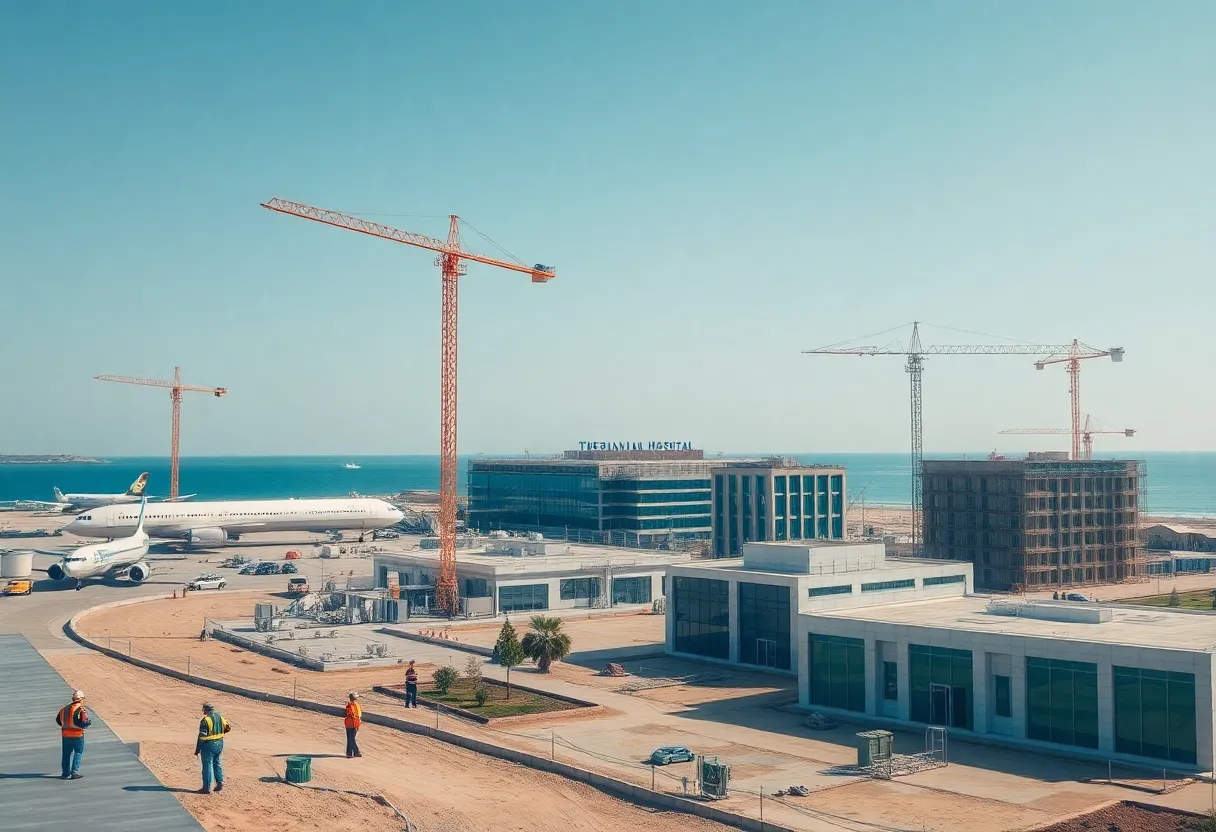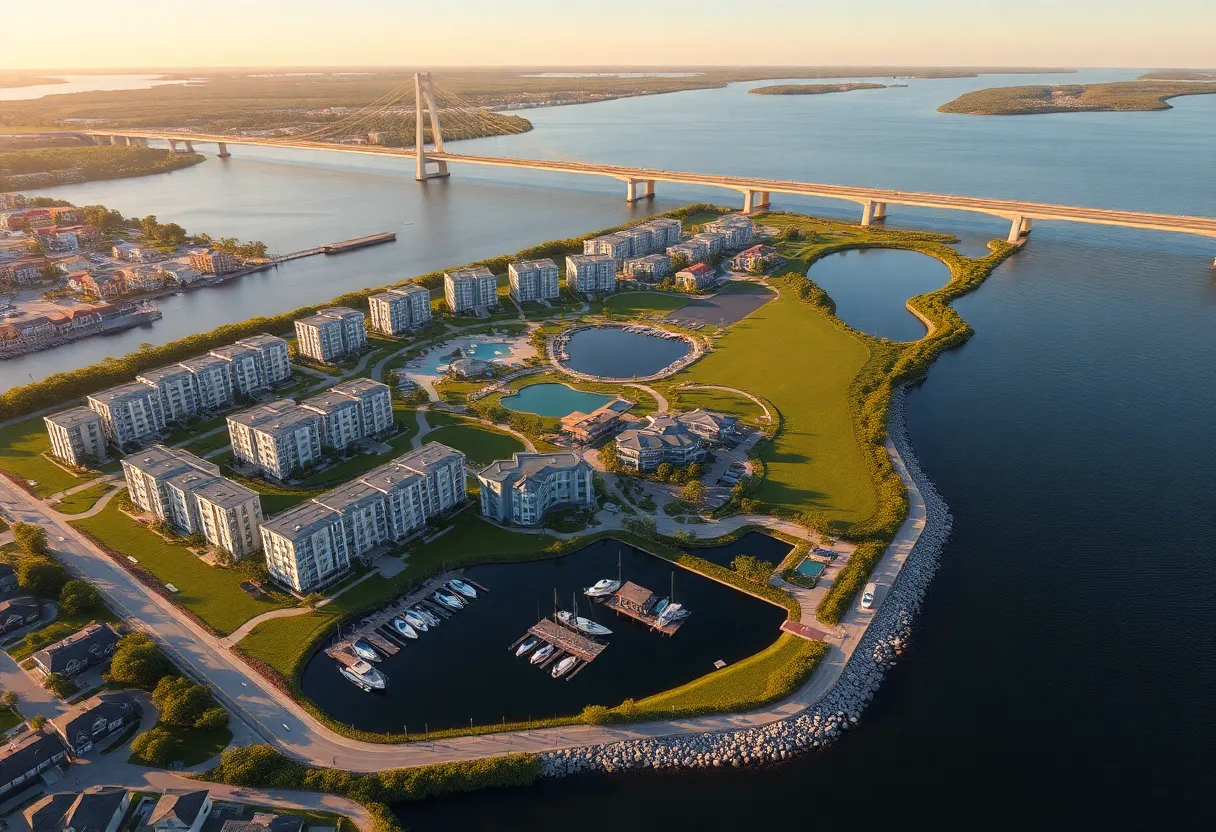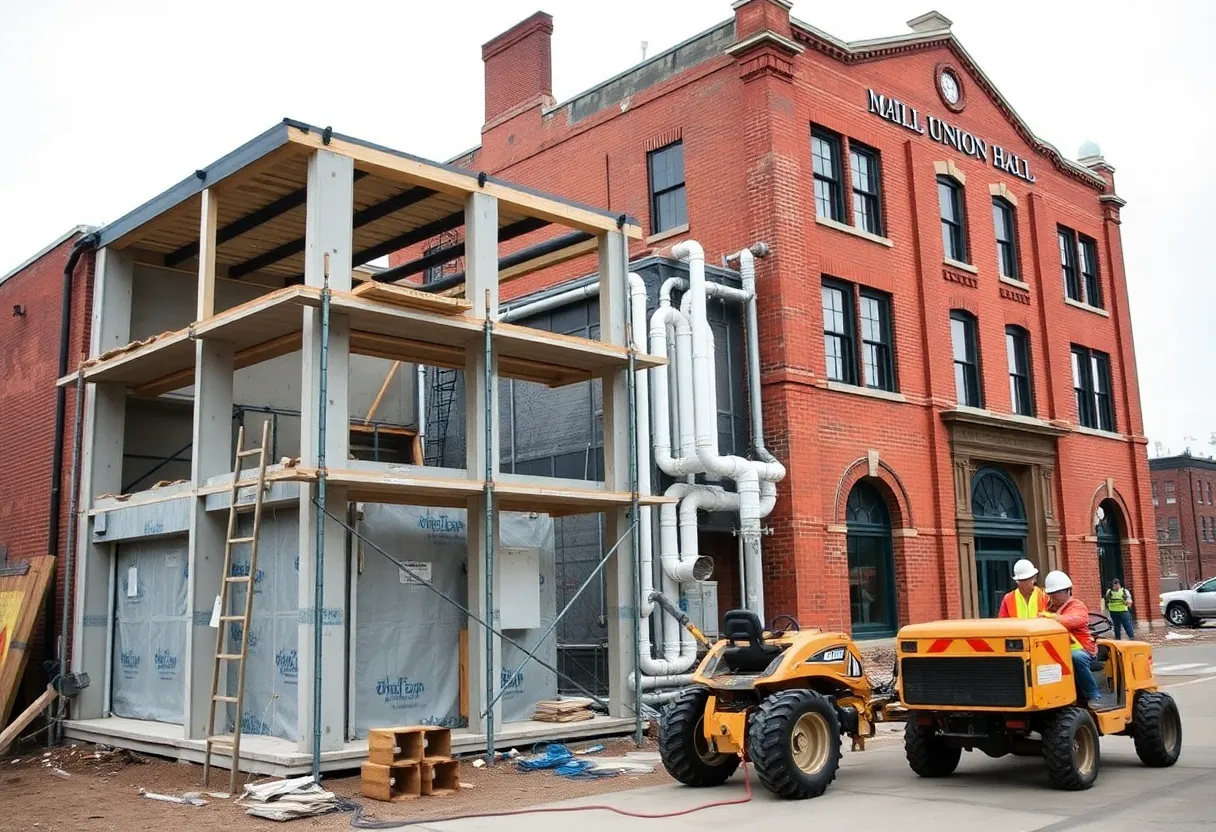, October 12, 2025
News Summary
Major regional investments are advancing across Latin America and the Atlantic: the Development Bank of Latin America and the Caribbean (CAF) approved a US$96 million loan for Cabo de Santo Agostinho to fund sanitation, drainage, roads, social infrastructure and a new Women’s Hospital benefiting over 200,000 residents. In Los Cabos, rapid population growth is prompting airport expansion, new roads and desalination projects to address water and housing pressures. Cape Verde unveiled a national 5G strategy to boost connectivity, smart tourism and digital services. Together these initiatives aim to strengthen resilience, public services and long-term economic growth.
Major Loans and Big Buildouts Move Forward in Brazil, Mexico and Cape Verde
What’s new: A regional development bank approved a US$96 million loan to support a municipal infrastructure program in Cabo de Santo Agostinho, Brazil, while planning and major works in Los Cabos, Mexico aim to keep pace with rapid population growth and tourism demand. Separately, Cape Verde launched a national strategy to roll out 5G services and boost digital access across the islands.
Top lines — CAF loan for Cabo de Santo Agostinho
The Board of a regional development bank approved US$96 million as part of a total US$120 million operation to fund an Infrastructure and Urban Development Program for Cabo de Santo Agostinho, in Pernambuco state. The program targets the city’s more than 200,000 residents and aims to promote sustainable urban development through investments in sanitation, drainage, mobility, social services, tourism resilience and environmental recovery.
Key program components
- Construction and improvement of urban drainage systems and paved roads
- New bicycle lanes and mobility upgrades
- Risk area containment and environmental recovery works along the coast
- Expansion and modernization of recreational, cultural, health and educational facilities
- Creation of parks and sports facilities and upgrades to solid waste management
- Construction of a Women’s Hospital to expand access to specialized health services and address gender equity
- Measures to strengthen sustainable tourism and increase the municipality’s attractiveness to visitors
Why it matters
The financing is intended to reduce inequalities, expand social infrastructure and improve quality of life while supporting local industry and tourism. The operation also reinforces a regional presence aimed at helping municipalities deliver more resilient and inclusive urban services.
Los Cabos: fast growth, big projects, and strain on services
Population trends: Los Cabos grew from about 44,000 residents in 1990 to over 350,000 by 2020. Current models estimate the municipality could reach 600,000–650,000 residents by 2035 if current growth rates continue. The area already contains roughly 44% of the state population and could hit 50% by 2035.
Airport expansion and travel capacity
- Los Cabos International Airport handled over 7.5 million passengers in 2024, a roughly 40% increase since 2021.
- A master plan by the airport operator includes a 7 billion peso investment for Los Cabos as part of a 52 billion peso program across multiple airports.
- Plans call for consolidating operations into a larger Terminal 2 by 2029, adding gates, expanding baggage handling by about 33%, increasing immigration checkpoints and installing nearly 20 new self-service kiosks.
Roads and local congestion
- Major road works include a high-traffic roundabout and underpass project used by more than 60,000 vehicles daily, with expected substantial disruptions through the works.
- A planned 20.3 km Interurban Axis would create a third route between Cabo San Lucas and San José del Cabo to alleviate Federal Highway 1 congestion; it has land agreements finalized and a projected 5 billion peso budget but lacks a start date pending federal approvals.
Water supply and desalination
- Los Cabos faces a water deficit of about 600 liters per second.
- A second public-private desalination plant is under construction and reported roughly 41% complete, with an expected finish in October 2026. Together with the first plant, both are projected to produce about 650 l/s, enough to cover the current shortfall if demand does not increase further.
- Multiple private desalination projects are also planned by 2027, while local communities have staged protests over water scarcity.
Housing, tourism and land use pressures
There is a shortage of affordable housing and rental units as prime coastal land is reserved for luxury developments. The East Cape area is a focal point for high-end resort projects, while sprawl is pushing into outlying colonias. National-level housing initiatives have struggled to secure affordable land parcels, so affordability challenges remain unresolved.
Cape Verde launches national 5G strategy
The government launched a National Strategy for 5G as part of a broader digital project funded by the World Bank and implemented through the national telecommunications directorate. The strategy aims to position Cape Verde as a regional digital hub by 2030, raise internet penetration toward 90% by 2026, and use 5G to boost smart tourism, digital health, education and agriculture.
Approach and partners
The plan is based on economic feasibility studies and calls for collaboration between regulators, operators, private sector players, academia, international partners and the diaspora. The launch convened policymakers, telecom operators and technology companies to align steps for modernization and regional connectivity.
Impacts and short-term disruptions
- Construction at airports and roadworks will increase travel times and local traffic during delivery phases.
- Desalination and other utility upgrades aim to reduce outages, but population growth could outpace supply without careful demand planning.
- Housing shortages and high-end development risks displacing lower-income residents unless land and affordability issues are addressed.
Bottom line
These concurrent investments and strategies aim to expand capacity, services and connectivity across three regions. The success of each program will depend on timely delivery, ongoing public participation, and alignment of resources to match rapid population and tourism growth.
Frequently Asked Questions
What will the US$96 million loan fund in Cabo de Santo Agostinho?
The loan is part of a US$120 million operation to finance sanitation, drainage, mobility improvements, social infrastructure, environmental recovery, tourism resilience and a dedicated women’s hospital.
How many people will benefit from the Cabo program?
The program is designed to directly benefit the city’s more than 200,000 residents through services, facilities, and risk-reduction works.
Is Los Cabos expected to double in size?
Projections indicate the population could rise to roughly 600,000–650,000 by 2035 if current growth patterns continue, nearly doubling the 2020 population.
When will the Los Cabos airport upgrades be completed?
The plan calls for moving domestic operations into an expanded Terminal 2 by 2029, with phased upgrades already underway to increase capacity and passenger services.
When will the new desalination capacity be available?
A second public-private desalination plant is targeted for completion in October 2026; combined with the existing plant, projected output should cover the current water deficit if demand remains steady.
What are the goals of Cape Verde’s 5G strategy?
The strategy aims to increase connectivity, reach up to 90% internet penetration by 2026, and use 5G to drive growth in tourism, health, education and agriculture while positioning the country as a digital hub.
{
“@context”: “https://schema.org”,
“@type”: “FAQPage”,
“mainEntity”: [
{
“@type”: “Question”,
“name”: “What will the US$96 million loan fund in Cabo de Santo Agostinho?”,
“acceptedAnswer”: {
“@type”: “Answer”,
“text”: “The loan is part of a US$120 million operation to finance sanitation, drainage, mobility improvements, social infrastructure, environmental recovery, tourism resilience and a dedicated women’s hospital.”
}
},
{
“@type”: “Question”,
“name”: “How many people will benefit from the Cabo program?”,
“acceptedAnswer”: {
“@type”: “Answer”,
“text”: “The program is designed to directly benefit the city’s more than 200,000 residents through services, facilities, and risk-reduction works.”
}
},
{
“@type”: “Question”,
“name”: “Is Los Cabos expected to double in size?”,
“acceptedAnswer”: {
“@type”: “Answer”,
“text”: “Projections indicate the population could rise to roughly 600,000–650,000 by 2035 if current growth patterns continue, nearly doubling the 2020 population.”
}
},
{
“@type”: “Question”,
“name”: “When will the Los Cabos airport upgrades be completed?”,
“acceptedAnswer”: {
“@type”: “Answer”,
“text”: “The plan calls for moving domestic operations into an expanded Terminal 2 by 2029, with phased upgrades already underway to increase capacity and passenger services.”
}
},
{
“@type”: “Question”,
“name”: “When will the new desalination capacity be available?”,
“acceptedAnswer”: {
“@type”: “Answer”,
“text”: “A second public-private desalination plant is targeted for completion in October 2026; combined with the existing plant, projected output should cover the current water deficit if demand remains steady.”
}
},
{
“@type”: “Question”,
“name”: “What are the goals of Cape Verde’s 5G strategy?”,
“acceptedAnswer”: {
“@type”: “Answer”,
“text”: “The strategy aims to increase connectivity, reach up to 90% internet penetration by 2026, and use 5G to drive growth in tourism, health, education and agriculture while positioning the country as a digital hub.”
}
}
]
}
Key features at a glance
| Project / Location | Scale / Investment | Main components | Timeline | Expected benefit |
|---|---|---|---|---|
| Cabo de Santo Agostinho (Brazil) | US$96M loan (part of US$120M operation) | Sanitation, drainage, roads, bike lanes, women’s hospital, parks, waste management, tourism adaptation | Approved Oct 10, 2025; multi-year program | Improved services, risk reduction, gender-focused health access |
| Los Cabos (Mexico) | Airport share ~7 billion pesos; other road and desalination budgets vary | Terminal expansion, road works (Interurban Axis), desalination plants, housing and utility upgrades | Airport consolidation by 2029; desalination plant targeted Oct 2026; road projects phased | Higher passenger capacity, eased congestion, increased water supply if demand managed |
| Cape Verde | Funded through World Bank-supported digital project | National 5G strategy, connectivity expansion, regulatory and partnership framework | Goals through 2026–2030; long-term economic impacts by 2036 | Broader internet access, digital services growth, regional hub potential |
Deeper Dive: News & Info About This Topic
Additional Resources
- Mexico News Daily: What Will Los Cabos Look Like in 10 Years?
- Wikipedia: Los Cabos
- Mexico News Daily: Local major infrastructure projects reflect growing pains in Los Cabos
- Google Search: Los Cabos infrastructure projects
- TechAfricaNews: Cabo Verde launches national 5G strategy
- Google Scholar: Cape Verde 5G strategy
- Dry Cargo Magazine: Laying the groundwork for infrastructure investment in Cabo Verde
- Encyclopedia Britannica: Cape Verde
- Vallarta Daily: Los Cabos water shortage — San Lázaro plant
- Google News: Los Cabos desalination San Lázaro plant
Author: Construction NY News
NEW YORK STAFF WRITER The NEW YORK STAFF WRITER represents the experienced team at constructionnynews.com, your go-to source for actionable local news and information in New York and beyond. Specializing in "news you can use," we cover essential topics like product reviews for personal and business needs, local business directories, politics, real estate trends, neighborhood insights, and state news affecting the area—with deep expertise drawn from years of dedicated reporting and strong community input, including local press releases and business updates. We deliver top reporting on high-value events such as the New York Build Expo, infrastructure breakthroughs, and cutting-edge construction technology showcases. Our coverage extends to key organizations like the Associated General Contractors of New York State and the Building Trades Employers' Association, plus leading businesses in construction and real estate that power the local economy such as Turner Construction Company and CMiC Global. As part of the broader network, including constructioncanews.com, constructiontxnews.com, and constructionflnews.com, we provide comprehensive, credible insights into the dynamic construction landscape across multiple states.





